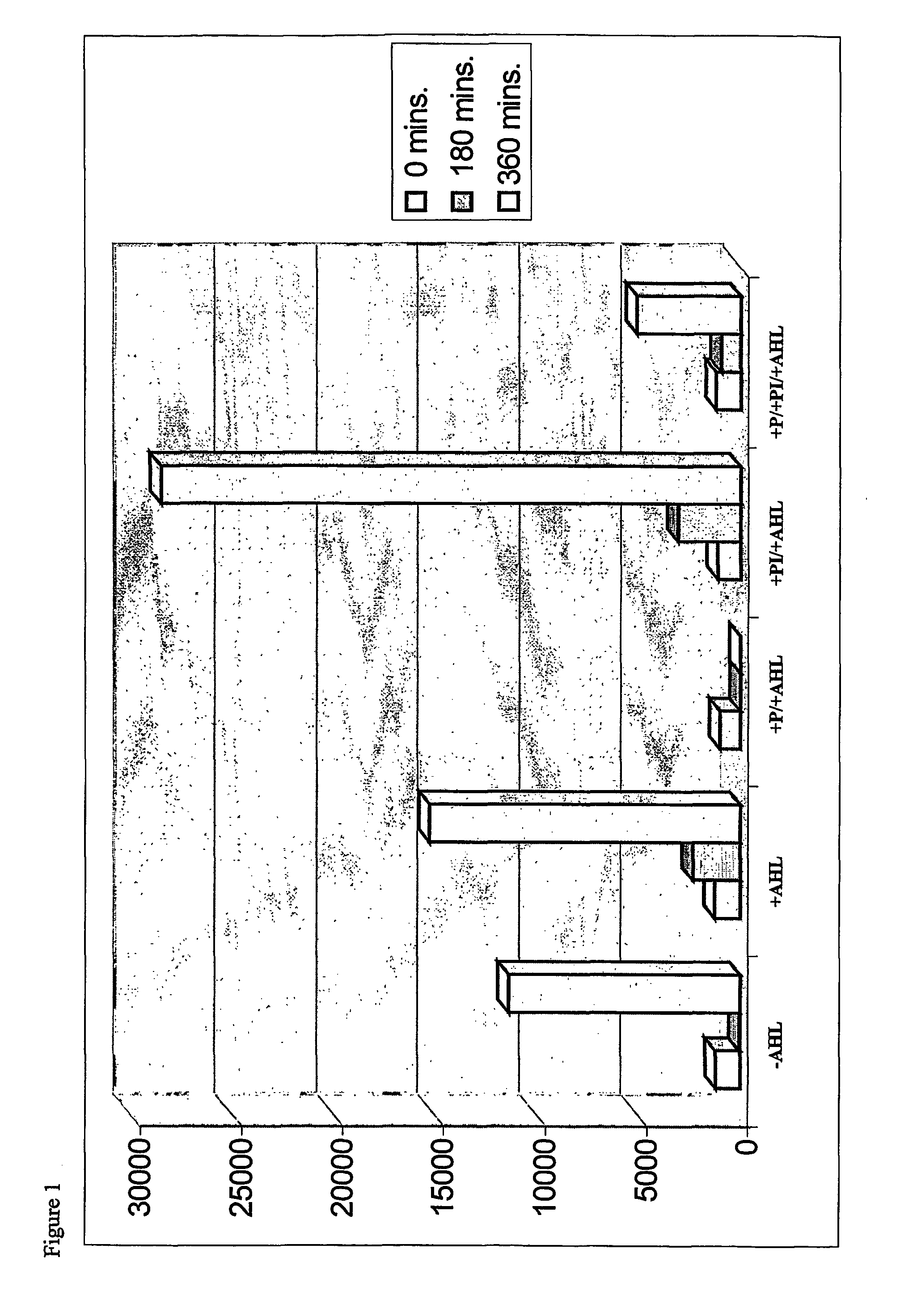Proteins Involved in Signal Transduction
- Summary
- Abstract
- Description
- Claims
- Application Information
AI Technical Summary
Benefits of technology
Problems solved by technology
Method used
Image
Examples
example 1
Treatment of Cells with Peptide Hydrolase
[0050]Vibrio fischeri NRRL B-11177 (ATCC 7744). The cells were grown at 25° C. in 50 ml volume medium in 250 ml flasks in an orbital shaker set at 200 rpm. Growth of cultures was measured by reading the optical density at a wavelength of 595 nm using a Pye Unicam P8600 Spectrophotometer with cuvettes of 1 cm light path and sterile growth medium as a blank. Vibrio fischeri cultures were grown in nutrient broth (Oxoid) +2% NaCl or in luminescence media consisting of 5% yeast extract, 5% tryptone peptone, 1% CaCO3 and 3% glycerol in filtered seawater.
Luminometry
[0051] 1 ml aliquots of the culture samples were placed into cylindrical, flat-bottomed cuvettes. No washing of the cells was required and light output was measured using a BioOrbit 1253 luminometer connected to a computer running the Lumicom™ data processing software. Light output was measured on a linear arbitrary scale, assuming zero to be complete darkness. Each reading was perfor...
example 2
Treatment of Cells with Peptide Hydrolase Inhibitor
[0053] The procedure was followed as for the peptide hydrolase addition experiments but with the addition of a bacterial peptide hydrolase inhibitor cocktail (Sigma, P 8465), containing 4-(2-aminoethyl)benzenesulfonyl fluoride, pepstatin A, E-64, bestatin, and sodium EDTA, in place of peptide hydrolase.
[0054]FIG. 1 shows the results of the experiments conducted using both peptide hydrolase and peptide hydrolase inhibitors. As a control, luminescence was measured both with and without addition of AHL, the quorum sensing signalling molecule. The third column of FIG. 1 shows that upon treatment with peptide hydrolase, luminescence was completely inhibited. Conversely, when cells were treated with peptide hydrolase inhibitor rather than peptide hydrolase, the luminescence almost doubled, indicating an increase in activation of the quorum sensing system. When cells were treated with both peptide hydrolase and peptide hydrolase inhibito...
PUM
 Login to View More
Login to View More Abstract
Description
Claims
Application Information
 Login to View More
Login to View More - R&D
- Intellectual Property
- Life Sciences
- Materials
- Tech Scout
- Unparalleled Data Quality
- Higher Quality Content
- 60% Fewer Hallucinations
Browse by: Latest US Patents, China's latest patents, Technical Efficacy Thesaurus, Application Domain, Technology Topic, Popular Technical Reports.
© 2025 PatSnap. All rights reserved.Legal|Privacy policy|Modern Slavery Act Transparency Statement|Sitemap|About US| Contact US: help@patsnap.com



